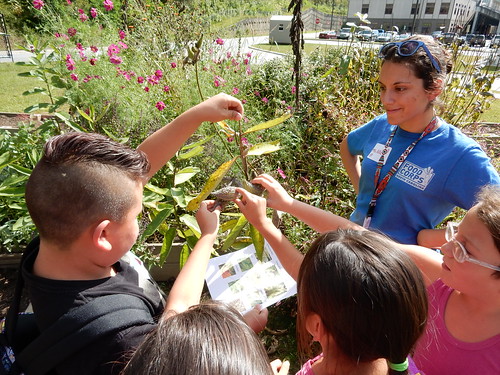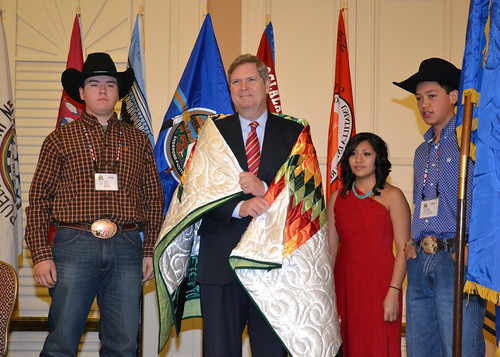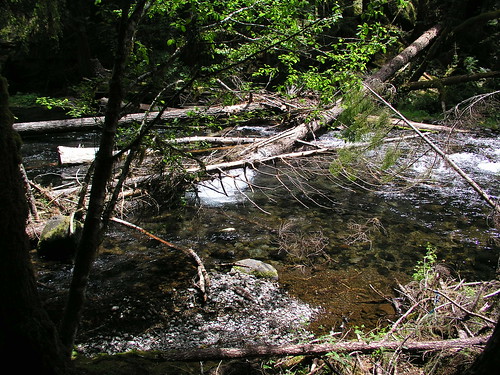2015 was another banner year for innovative Federal / Tribal partnerships, government-to-government relations with Federally Recognized Tribes and investments that continue to improve the quality of life for American Indians and Alaska Natives. Here are five examples from this past year of ways USDA and this Administration have built on their deep commitment to improving our working relationships with Tribes and helping them meet unique challenges facing tribal communities head-on.
1. Tribal partnerships fuel sustainable aviation
The Confederated Salish and Kootenai Tribes and the Muckleshoot Indian Tribe working through the Northwest Advanced Renewables Alliance Tribal Partnership Program are making aviation biofuel from twigs and small branches that would otherwise have been burned in slash piles after timber harvests.

2. Sowing Gardens, and Growing Kids Who Love Them
If you ever bought into the idea that “kids don’t like vegetables,” elementary schoolers at Cherokee Central Schools’ in North Carolina could have changed your mind that day. Stationed in front of the school during after-school pick-up time, every car and person within reach received a glowing description of the wondrous greens the students helped grow, the most popular being a local native variety called Creasy Greens.

3. Investing in Opportunity in Indian Country
Investments in strong, secure infrastructure in Indian Country—things like roads and bridges, but also internet access, housing and community facilities like hospitals and schools—help to improve connectivity and access to information, move products to market, and make communities competitive and attractive to businesses and investments.

4. USDA Foods Help Nourish a Culture
Traditional foods are of significant value to Native American and Alaskan Natives today. The same foods that have been used to feed our ancestors not only feed our bodies, but they feed our spirit. The U.S. Department of Agriculture (USDA) recognizes this importance and works diligently to offer program and partnership opportunities that help enhance traditional food access in Indian Country.

5. New Farm Bill Conservation Program Benefits Tribes Nationwide
Stewardship of the land is a sacred principle for many American Indian tribes and Alaska Native villages. For those looking to create a conservation strategy, however, it is important to understand early on that the terrain doesn’t stop where your land ends.

